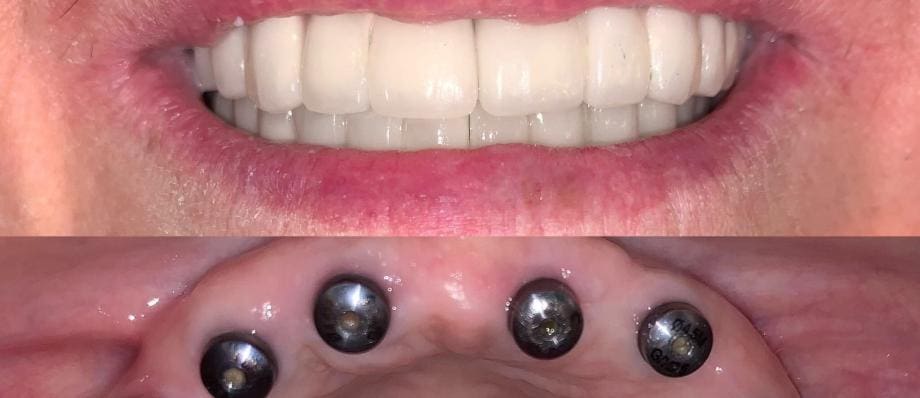Introduction:
The current trend of manufacturing prostheses on implants in full arch or “Full Arch” is using zirconia prostheses, due to aesthetics, the use of a monolithic structure milled and subsequently made up or stratified. Traditionally these structures were made of metal-ceramic, but the aesthetic claim and the simplicity of the process are making it a second treatment option. This article gives us another advantage to the use of complete zirconia structures, such as plate accumulation, since it shows that it is inferior compared to titanium structures.
QUALIFICATION:
Fixed Full Arch prosthesis on titanium vs. zirconia implants: a comparison of plaque accumulation
AIM:
The aim of this clinical study was to compare plaque accumulation and soft tissue inflammation in full-arch fixed implant-supported prostheses fabricated with monolithic titanium and zirconia frameworks.
Materia and methods
Twenty participants with a full-arch implant-supported fixed maxillary prosthesis were enrolled in the study. The participants were divided into two groups according to the material of the prosthesis, titanium (Ti) or zirconia (Zir). The prosthesis had to have been in use for at least six months, and participants were examined during at least three maintenance appointments at three-month intervals. The clinical information collected included photographs standardized to record the plaque area index (PAI) of the intaglio surface of the prosthesis; clinical parameters including modified plaque index (mPI), modified bleeding index (mBI), mobility of the implant (MOB), probing depths ≥ 5 mm (PD), suppuration (SUP), band of keratinized tissue ≥ 2 mm ( KT) and an intraoral photograph of the maxillary arch without the prosthesis to assess for soft tissue redness.
Results
The MOB was not present in any implant at any time. SUP could not be analyzed because it was a rare finding. Both groups showed significant increases in mBI over time. No significant differences were observed in the case of PD between the groups at any time point. Implants in the Ti group had significantly higher KT values than those in the Zir group; levels remained constant over time for both groups. Zirconia prostheses had slightly lower IAP levels than Ti prostheses. The IAP in the Zir group decreased significantly over time (P=.035); in the Ti group they remained constant (P=.45). Higher IAP levels were correlated with increased erythema levels; both groups had a significant decrease in erythema values over time (P=.04).
Conclusion
Full-arch fixed maxillary prostheses in zirconia showed a significant decrease in plaque accumulation in individuals who had received periodic maintenance and oral hygiene instructions. Titanium prostheses had significantly higher plaque levels than zirconia crown at all points, which were not reduced by oral hygiene and maintenance measures. The present study suggests that patients receiving zirconia prostheses respond well to plaque control measures, whereas plaque control for those with titanium prostheses may be more difficult.
Author: Dr. Barbara Pamies Jordana
Degree in Dentistry from the International University of Catalonia (UIC). Master’s Degree in Oral Prosthesis and ATM from the UIC. Diploma of Advanced Studies (DEA) from the UIC. Associate Professor of the Official Master’s Degree in Restoration and Aesthetics, and Integrated Clinic of the Degree in Dentistry at the UIC. Private practice as a specialist in Oral Rehabilitation at Institut Maxil.lofacial Barcelona
You May Also Like:
No related posts.

